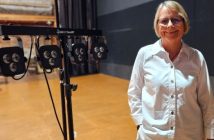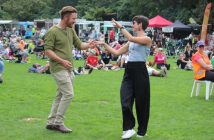Many tourism businesses in the mighty Waikato are doing some amazing mahi as the region moves toward becoming a fully integrated sustainable and regenerative tourism destination.
Although we knew, anecdotally, that we have a number of sustainability heroes, Hamilton & Waikato Tourism (HWT) conducted a survey to gain an accurate picture of what is in place for tourism operators in the region across the four pillars of regenerative tourism – environmental, cultural, social and economic.
As a result, we now have a better understanding of what the challenges and opportunities are, and we are therefore more strongly positioned to be able to provide meaningful assistance and promotion in a range of ways for our Waikato tourism businesses. Amongst these could be providing workshops covering the kinds of actions businesses can take, sharing the stories of hero businesses to deepen the understanding of others, and creating and promoting itineraries for neutral and low carbon visits in our region.
Here at HWT our view is that the road to becoming a regenerative destination is a continual journey and our role is to foster the ethos and support what tourism businesses can practically achieve in an ongoing way, rather than being about being a fixed, static state, or a one-size-fits-all approach.
Sustainability is a philosophy and mindset that many operators in the tourism sector, and other businesses throughout the mighty Waikato, can get behind. At a national level the New Zealand Tourism Sustainability Commitment developed by Tourism Industry Aotearoa aims for every New Zealand tourism business to be a sustainable operation by 2025.
The commitment covers not only environmental, but also community, visitor and economic benefits.
Our survey revealed that many tourism businesses in our region are doing well in areas including restoring and protecting natural places, reducing waste and engaging with community and visitors.
A number of respondents shared that they have kaitiakitanga/guardianship as a core value, that they have ongoing programmes to trap predator species, plant native trees/shrubs, eradicate weeds, maintain clear culverts to avoid landslips and mow un-grazed grass areas to reduce the risk of wildfires.
Several have also fenced off waterways to keep out animals and areas of native bush to help protect and assist with the regeneration of trees – and document and compare any changes to their environment.
Some companies have also moved to electric vehicles, many have installed solar panels and have workplace approaches aimed at reducing electricity consumption.
While there are many aspects to celebrate, we know there is a lot more work to do. For example, the survey revealed there is an opportunity for Waikato tourism businesses to build their strength in other sustainability areas such as carbon reduction and sustainable procurement.
While businesses are all at different stages, some of the interesting statistics drawn from the survey include:
-85 percent of operators focus on reducing energy consumption
-79 percent actively embrace mānakitanga (showing respect, generosity and care for others) in their offering, or have some understanding of how to achieve this
-68 percent have a pest control or eradication programme
-68 percent are paying at least the living wage
-60 percent carry out tree and riparian planting
-45 percent focus on all waste reduction by recycling, reducing, reusing or rethinking
-45% offer funding and/or support in some form to local community groups
Our special congratulations to one of our region’s sustainability super stars, Sanctuary Mountain Maungatautari, on winning the Social and Environmental Sustainability award in the recent Waikato Chamber of Commerce Business Awards. This is the latest in a string of awards providing ongoing recognition for all the dedicated people, past and present, who are kaitiaki of Maungatautari.
Following a social impact report, Sanctuary Mountain has also added three wellbeing programmes to the experiences available to visitors to the maunga, including an introduction to traditional Māori herbal medicine and the opportunity to spend time immersed in the serenity of the native forest.
Sustainability is also intertwined with event planning and delivery for key events in the region such as NZ National Fieldays, who are certified as a sustainable event according to ISO 20121. During the event, Environmental Impact Areas (EIAs) are identified in order to set objectives and monitor progress. Data is gathered on-site utilising carbon meter readings, calculations and surveying to calculate the carbon footprint of the event, and measures are then taken to offset this footprint.
Tourism companies based in Waitomo have also led the way and championed environmental stewardship for many years. One such company, Discover Waitomo, has recently been recognised for their work in this space by receiving Recreation Aotearoa Tiakina Taiao Environmental Leadership Award.
Operator and kaitiaki of the Waitomo Glowworm Cave, Ruakuri Cave, and Aranui Cave, Discover Waitomo has an environmental team on site, climate monitoring systems in the caves, and environmental education programmes among other sustainability initiatives.
Family-owned Waitomo Adventures has just been awarded gold Qualmark Sustainable Tourism status in honour of its sustainability commitment built into the company’s day-to-day operations as well as initiatives such as riparian planting and waterway restoration. The company offers a range of caving experiences including The Lost World, Haggas Honking Holes and the family-friendly Troll Cave, along with a day spa where the ‘exploration’ is all about indulgence.
Even well before sustainable tourism became the reality that it is today, companies such as those mentioned have been placing a premium on regenerative practises. They know this matters, not just for their own livelihood and the continuing health of the ecosystems and communities they operate in, but also for our future generations of locals and manuhiri (guests) alike.





